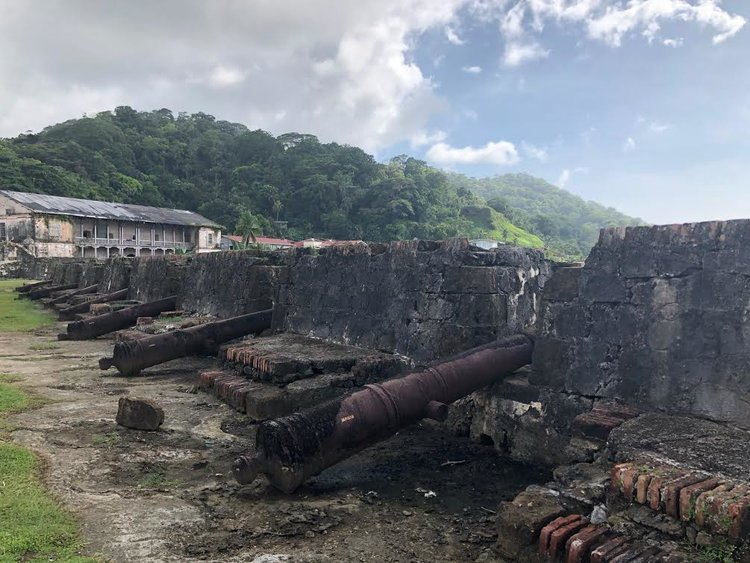Pirates were the original bad boys.
Sailing the high seas, forcing losers to walk the plank, and getting after dat booty.
So when I heard there was a way to take a pirate-themed vacation, let’s say I was on board.
We started out in Panama, where I learned Captain Morgan was actually a real person and not just that guy on spiced rum bottles — Sir Henry Morgan, a Welsh privateer. Privateers were basically dudes that owned their own ships and had a government OK to use them in war, usually to capture merchant shipments of enemies. You plundered, you gave some back to the government, and it was all cool. Except for the people who had their stuff jacked.
Our first pirate stop was to Portobelo, about a two-hour drive from Panama City, to check out the old Spanish colonial forts, which are now a UNESCO heritage site.
The site is said to originally be called Puerto Bello for “beautiful port” and then over the years transitioned from Porto Bello to Portobelo. Another OG pirate, Sir Francis Drake, died at sea in 1596, and is said to have been buried in Portobello Bay.
Since Portobelo was a pit stop for Peruvian silver, the city’s had a lot of trouble from pirates, including Morgan. The fort (pictured above) was the site of several skirmishes between the British and Spanish as the British tried to muck up the Spanish Galleon trade, but they never really got a foothold.
Today, the ruins are striking, and look out at a beautifully dilapidated customs house. A few blocks away is the Iglesia de San Felipe, which houses the Cristo Negro (Black Christ), a wooden statue that washed up in Portobelo’s harbor in the 1600s. Cristo Negro is celebrated during a yearly festival in October, when some devotees walk all 53 miles from Panama City to honor him.
But there’s still a modern-day link to “pirates”—many criminals make the trek for atonement for their crimes, and Cristo Negro is known in Panama as the patron saint of criminals, said Robert Taylor, a Panamaian historian and tour guide.
After a little bit of beaching (of course I’m going to go to the beach in Panama, let me live), I’m ready for a new day of vicarious swashbuckling. There’s plenty to see in Panama City itself for the pirate enthusiast.
Morgan didn’t just get up in Portobelo’s business. He also captured, sacked, and then burned Panama City, a hub for transporting gold and silver, in 1671. You can visit the ruins of Panama Viejo today, in the suburbs of the modern city—rebuilt a couple miles away.

Then, for a look at modern maritime trade—and to speculate how much is smuggled through—check out the Panama Canal. The Miraflores locks gives a glimpse of the massive engineering feat in action from a balcony vantage point, and there’s a museum of how builders braved challenges like malaria (example rookie mistake—they thought it was caused by ants rather than mosquitoes, so added more water to the situation).
Pirates like Drake and Morgan headed to Cartagena (pictured in top photo)—and, so did we. The Spanish would keep treasure it plundered from native peoples in the city before shipping it back to Spain, so it was a huge target: During the 1500s, the Colombian city was subject to five pirate attacks, the most famous of which was led by Drake, who burned down a bunch of buildings but “mercifully” didn’t level the city after receiving a huge ransom.
The result was the construction of a wall around the main city and several nearby forts, which make it a UNESCO heritage site and such a striking destination now; the contrast of the old city walls and the ultra-modern sleek new construction around it is enough to get any traveler hooked.
There’s a kid-friendly pirate museum on a Spanish Galleon replica docked near the walled city that has dancing shows, as well as drinks and food. But a must-do is an actual boat trip around the Bay of Cartagena to see the city from the water, but also to visit and explore nearby forts.
CheapCaribbean is offering a similar pirate-themed trip in December. To learn more, visit here.

